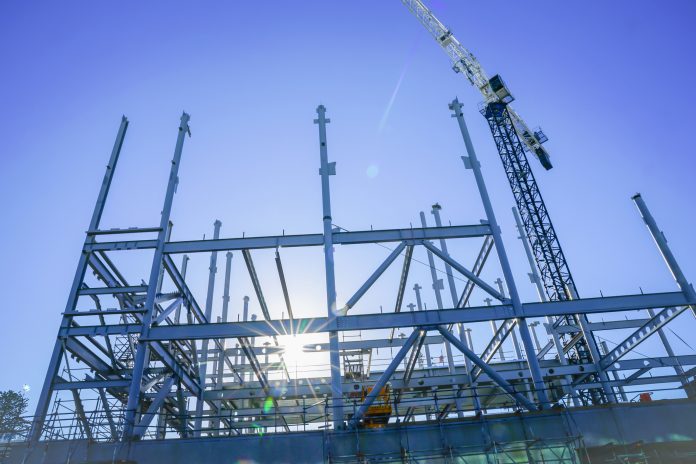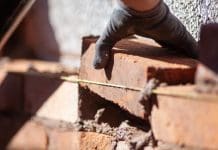The Steel Construction Institute has developed a draft protocol proposing a system of investigation and testing to support the mainstream reuse of structural steel
Reusing reclaimed structural steel, as opposed to the common practice of recycling by remelting scrap, offers significant environmental benefits and potential cost savings.
Steel has excellent credentials for the circular economy, both as a material that is strong, durable, versatile and recyclable and as a structural framing system that is lightweight, flexible, adaptable and reusable.
And, with growing pressure to think more about the impact of construction materials, as well as national and international projects that have successfully reused structural steel, the Steel Construction Institute is in the process of developing a protocol to help facilitate the reuse of structural steel sections reclaimed from existing building structures.
The draft protocol proposes a new system of investigation and testing to establish material characteristics, with advice for designers completing member verifications. The protocol places responsibilities on the holder of salvaged steelwork, including identification, assessment, control procedures and declarations of conformity.
It is founded on the principle that given the appropriate determination of material characteristics and tolerances, refabricated salvaged steelwork may be fabricated and CE marked in accordance with BS EN 1090.
Drivers for reuse of structural steelwork
Structural steel sections are inert, robust and dimensionally stable elements that are generally bolted together to form structural assemblies which are inherently demountable.
As such, they are seen as an obvious candidate for reclamation and reuse, as opposed to re-melting. Reusing structural steel yields significant environmental savings compared to recycling at a time when there is growing pressure on the construction industry to be more resource-efficient, reduce waste and to lower embodied carbon impacts.
More recently, there has been a push towards the concept of the circular economy, particularly at the EU level, with a roadmap developed to support a shift towards a resource-efficient, low carbon European economy.
Increased structural steel reuse will support both of these aims and stimulate new business opportunities in the UK in particular by substituting steel imports. Although new steel and scrap steel prices are volatile, analysis reveals that the long-term price differential between the cost of UK structural steel and scrap sections is over £300 per tonne. This represents the potential profit opportunity through structural steel reuse. Although additional costs (relative to recycling) may be incurred through deconstruction, testing, storage, refabrication etc, structural steel reuse can yield cost savings.
Salvage, stock and reuse
The process of reclaiming steelwork to reuse in another structure can be broken down into several stages:
1. A building is offered for salvage of the steelwork for reuse.
2. A business case is established between the holder of the stock and the company responsible for the demolition.
3. Details of the anticipated salvaged steel are recorded, such as the age of the structure, a preliminary listing of the steel components and a preliminary inspection of the members for damage, obvious repairs and significant corrosion.
4. Salvaged steelwork is received by the stockholder, grouped and listed. A single batch of structural members is identified as being taken from the same original structure, having the same serial size and structural function, having the same material grade, as established by the non-destructive testing of every member. The grouping has an important impact on the extent of testing required.
5. Members are inspected and tested. The testing regime involves a combination of non-destructive and optional destructive testing, with the opportunity to make conservative assumptions about certain material characteristics. The seller of the stock is responsible for declaring the necessary characteristics as the material is sold.
6. Material is sold, with an accompanying declaration of the material characteristics by the holder of the salvaged stock.
7. Structural design and member verification is completed with certain modifications.
Barriers to reuse
The reuse of steel is not a new concept; indeed, it was more common a few decades ago before suffering from a decline, partly because of new development programme constraints and tougher health and safety requirements for demolition, particularly working at height.
While reusing steel is technically viable, there are many barriers – real and perceived – to adoption. Based on SCI’s consultations with the supply chain, the main barriers to reuse are:
1. Availability of reclaimed sections, particularly of the desired size, volume and in the right location.
2. Issues relating to the quality, traceability and certification of reclaimed sections.
3. Additional cost associated with using reclaimed sections.
4. A lack of supply chain integration; particularly communication and sharing information through the supply chain and trust (and risk-sharing) between companies.
5. Additional time required within construction programmes to allow for using reclaimed steel; in general, additional time incurs additional cost.
6. Reclaiming and reusing structural steel is a relatively uncommon practice and many organisations simply do not have the skills or experience to do it.
7. The perception that reclaimed steel is somehow inferior to new steel sections.
BIM can overcome several of these barriers by providing certainty about material properties, traceability and provenance, offering a more cost-effective means of enabling future reuse.
Design for deconstruction
Design for deconstruction is key to the circular economy yet at present, buildings are generally demolished with little thought about preserving the integrity and value of its components for reuse. At its most basic, there are two considerations:
1. The types of materials and components used; some products, like structural steel, are inherently more reusable than other structural materials and systems.
2. The way the materials and components are put together and deconstructed.
The key principles for design for deconstruction are:
1. Simplicity: Design building systems and interfaces that are simple to understand, with a limited number of different material types and component sizes.
2. Standardisation and regularity: Design building systems and materials that are similar throughout the building and laid out in regular, repeating patterns. Where possible, standardised elements.
3. Simplify and separate building systems: Use a layering approach to keep elements of the buildings (with different anticipated lifetimes) separate.
4. Minimise the number of different types of materials and components; fewer larger elements which are more durable and easier and quicker to remove are more likely to be reused.
5. Use lightweight materials and components.
6. Use reusable materials: Chose materials that are inherently durable and reusable and retain their value through reuse.
7. Identify points of disassembly/connections and ensure they remain accessible.
8. Simplify and standardise connection details: This allows for efficient construction and deconstruction and facilitates reuse without modification after deconstruction.
9. Use mechanical fasteners in preference to chemicals such as sealants and adhesives.
10. Record as-built conditions, ie what was built not just what was designed.
11. Provide a deconstruction plan outlining general concepts where the load path for the self-weight of structure and deconstruction loads follow conventional paths. Provide specific, detailed plans where load paths are not conventional. All load transfer systems should be identified.
12. Record adaptations to the building over its life.
13. Ensure information is securely stored and remains accessible.
The SCI intends to consult on its draft protocol over the summer and then formally launch it at an event at the Build Centre in London on 8 October.














